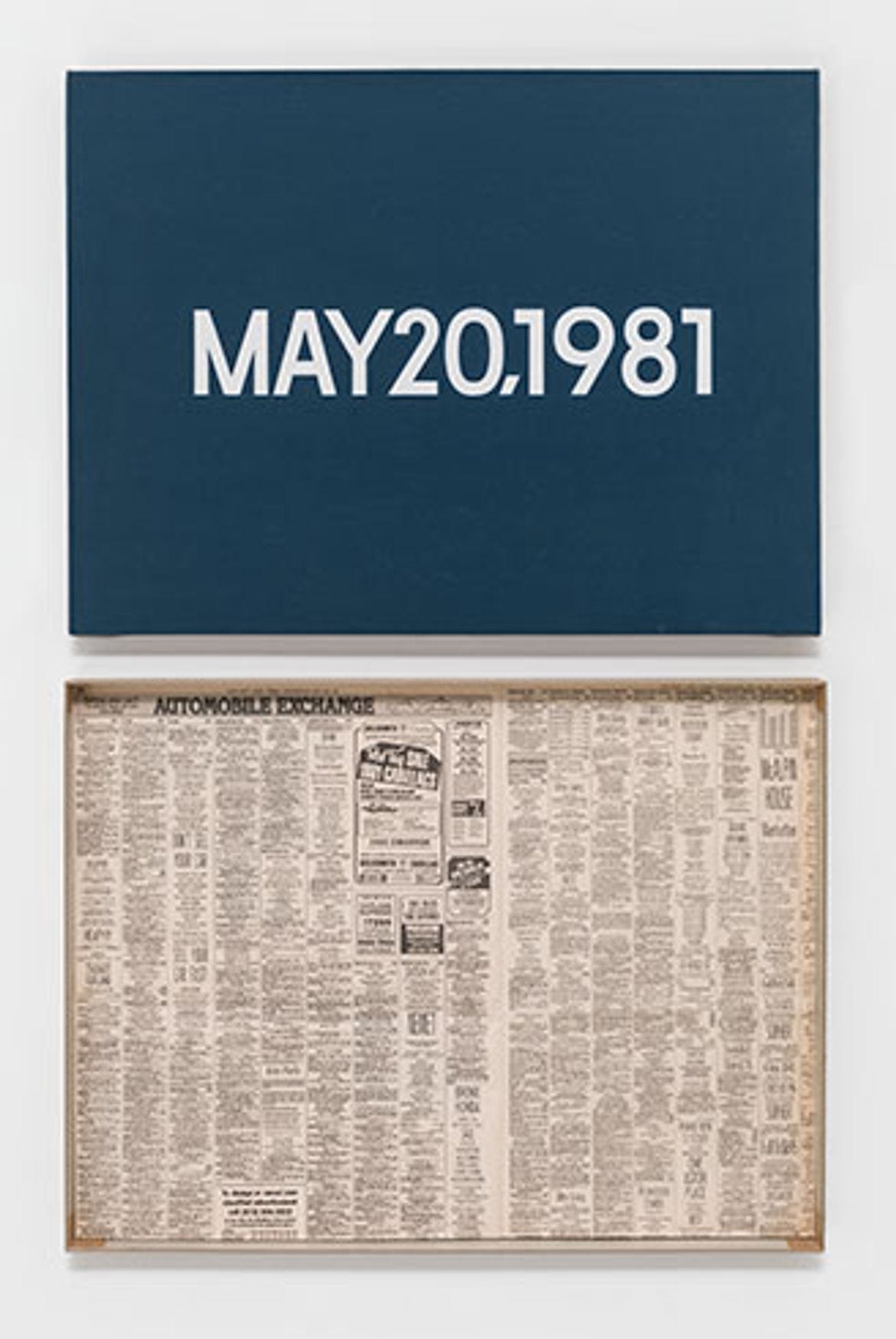On Kawara - Today Series/Date Paintings
On January 4, 1966, On Kawara began his Today series, or Date Paintings. He worked on the series for nearly five decades. A Date Painting is a monochromatic canvas of red, blue, or gray with the date on which it was made inscribed in white. Date Paintings range in size from 8 x 10 inches to 61 x 89 inches. The date is composed in the language and convention of the place where Kawara made the painting. When he was in a country with a non-Roman alphabet, he used Esperanto. He did not create a painting every day, but some days he made two, even three.
The paintings were produced meticulously over the course of many hours according to a series of steps that never varied. If a painting was not finished by midnight, he destroyed it. The quasi-mechanical element of his routine makes the production of each painting an exercise in meditation. Kawara fabricated a cardboard storage box for each Date Painting. Many boxes are lined with a cutting from a local newspaper. Works were often given subtitles, many of which he drew from the daily press.
Kawara’s choice of dates appears to follow no overall principle. Some dates may have been personally or historically significant. Above all, however, the Today series addresses each day as its own entity within the larger context of the regularized passage of time. The series speaks to the idea that the calendar is a human construct, and that quantifications of time are shaped by cultural contexts and personal experiences.
After the first year, Kawara found that he had no more room in his studio to hang them and began—the story goes—having nightmares about the Date Paintings. A few months after Kawara began constructing storage boxes, he began adding newspaper clippings from the date on which the painting was painted. While these have been displayed with the paintings over the years, Kawara did not consider these part of the artworks themselves.
At the same time, the boxes were more than just a place for the artist to store his prolific output. This is very Japanese. You have a scroll painting, and you unroll it, and you roll it back, and you store it. He didn’t make it to be presented. It’s more like a scientist who tries to find something out and then publishes it. And the form, the way he publishes it, is part of the research.

